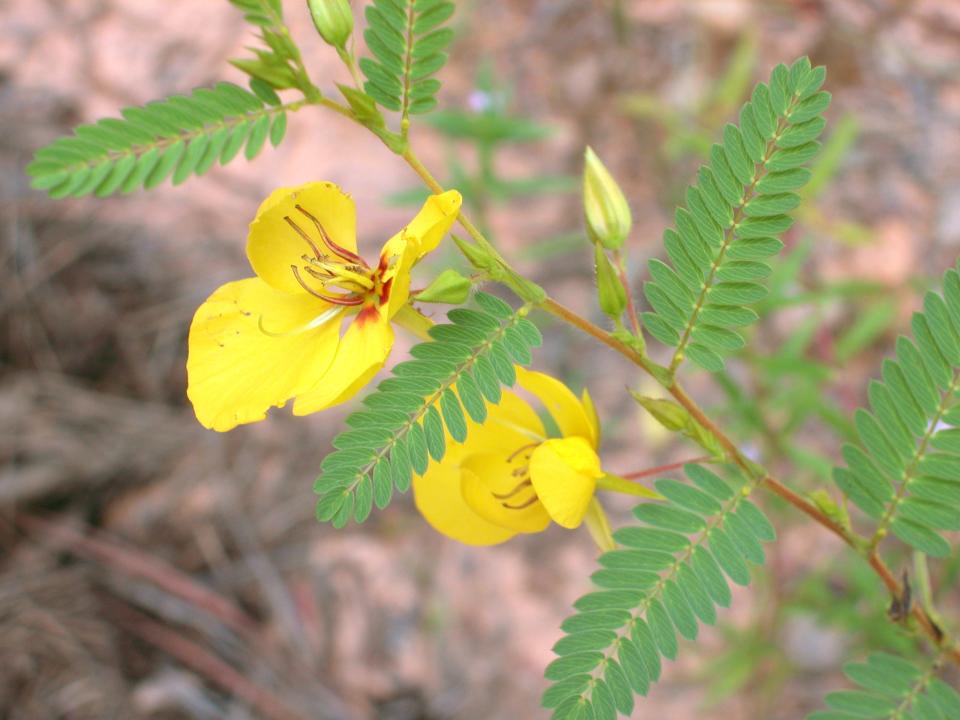This prolific pea is an herbaceous member of the bean family | Mystery Plant

Yes, the bean family, which is clearly one of the most important plant families on earth in terms of species diversity, ecology, and human economy. This huge family is distributed all around the world, except for its coldest parts, and consists of probably 21,000 (or so) species arranged in almost 800 different genera.
Native plant: History of a native plant: Spiky rattlesnake master packs strong medicinal powers
Seed library: From arugula to swiss chard: Plot fall garden by checking out Leon County Seed Library
Members of the bean family include tender annuals, woody shrubs, vines, and enormous forest trees. Different species have been (and continue to be) valued for nitrogen fixation as “green manure” for croplands, as well as timber, dyes, drugs, honey production, garden ornamentals, and of course, food.
Food items from the bean family include tubers, foliage, and most importantly, the fruits, which are called “legumes.” Legumes come in a variety of shapes and sizes, again dependent on the species, but always consist of a pod-like structure derived from a simple pistil in the flower.
This pod-like structure will typically break open along two lines, along the top and bottom, and one or more (sometimes a lot) of seeds will thus be distributed. The word “legume” gives us the old-timey botanical name for the bean family, which is Leguminosae. Be aware that the more “modern” name, and more in vogue with botanists, is “Fabaceae.”
When I was in school, we learned that the bean family is broken easily into 3 constituent subfamilies, these differentiated by their members’ flower structure. The largest subfamily would the “true” bean group, followed by the mimosa group, and lastly the honey-locust group.
“Partridge pea,” Chamaecrista fasciculata, our Mystery Plant, is an herbaceous member of this last one.
It's native to a large part of the New World, including much of eastern North America as well as Mexico. As you might expect, a species with such a wide distribution would exhibit quite a bit of variation in terms of size and details of the flowers and fruits.
This is an annual species, and after sprouting, will produce a branched stem 2-3’ tall. Its leaves are compound with a good many leaflets on each side. When disturbed or jostled, the leaflets will fold up along the midrib of the leaf, and this has led to the common name “sensitive plant” — but various other species also do this.
On the leafstalk will be an attractive nectar-producing gland which ants like to visit for a snack. The flower consists of 5 sepals and 5 brilliant yellow petals, the lowest of which is the largest. The legume that is produced by the ovary will be straight, and about 2” long, and hairy. In the full bloom, the plants are quite showy, and they attract plenty of different kinds of bees going after all that pollen.
These plants are great at producing seeds, and can easily colonize newly disturbed ground, including fields. Because it can be so prolific, it might not be so good for a small garden, but in your back-40, terrific.

John Nelson is the retired curator of the A. C. Moore Herbarium at the University of South Carolina in Columbia SC. As a public service, the Herbarium offers free plant identifications. For more information, visit www.herbarium.org or email johnbnelson@sc.rr.com.
Never miss a story: Subscribe to the Tallahassee Democrat using the link at the top of the page.
This article originally appeared on Tallahassee Democrat: Partridge pea is a member of the diverse bean family

